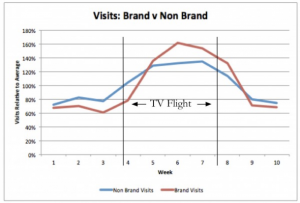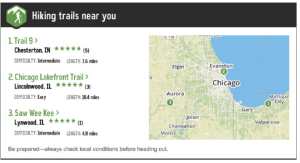 Ed Koch, the mayor of New York City throughout the 1980s, is a role model for managers everywhere. His managerial style never strayed from catering to his most important advocates: the voters.
Ed Koch, the mayor of New York City throughout the 1980s, is a role model for managers everywhere. His managerial style never strayed from catering to his most important advocates: the voters.
A popular figure among everyday New Yorkers, Koch rode the subway, shook hands with everyone he met, and always asked, “How’m I doin’?” His policies came directly from the people, and the continuous feedback he received shaped the way he ran the city.
Although you’re not the mayor of New York, you can do the same for your modern marketing agency. Instead of only letting your employees speak their minds at biannual or annual performance reviews, give them the opportunity to chime in whenever possible in a constructive and organized way. The system of feedback at most businesses is broken, and a culture of continuous feedback is the solution.
A Successful Culture Depends on Continuous Feedback
Often, employees must respond to multiple supervisors or account managers, which leaves a lot of room for miscommunication. When you institute a culture of continuous feedback, you ensure that everyone’s on the same page no matter where your employees are or what they’re working on.
Quick, scheduled, and continuous feedback is a two-way street. A culture of continuous feedback doesn’t mean that only employers give employees feedback; it means inviting employees to provide feedback directly to managers and the leadership team. This helps you identify potential problems or sources of discontent quickly and respond to industry changes.
There are constantly new industry developments cropping up, such as the explosion of mobile or a new focus on attribution, which means you need to be able to adapt quickly. A continuous feedback loop will make sure your employees are keeping pace, and it gives them a forum to explore new areas of interest.
Technology changes the way we work and think, but offering employees your ear is one thing that should remain the same. Be open to their feedback or you’ll risk losing valuable talent. One of the most consistent comments I see from dissatisfied employees on employee review website Glassdoor is that the leadership team is not taking advantage of the talent and ideas they already have on the team.
The Annual Review Is Dead
Waiting around for an annual review no longer works. Instead, set up a system of formal check-ins several times a year, perhaps quarterly. Stick to a schedule by putting these reviews on a calendar where everyone can see them and implementing a process that reviews the most important aspects of the person’s job and her fit with the culture or values.
The key to making frequent check-ins a success is preparation. At my company, we collect weekly feedback using a program called TINYpulse. Our HR team compiles the information from TINYpulse, including “cheers” that employees have given each other. They also include information about past raises and promotions, enabling managers to have all the pertinent information close at hand.
During the check-ins, it shouldn’t be just the managers giving evaluations; employees should be asked to provide self-evaluations. An open dialogue should follow about any discrepancies or issues.
It can also be useful to have more casual chats between these formal check-ins. They provide great opportunities to discuss upcoming projects and employee capacity in a relaxed setting.
Once you’ve implemented a continuous feedback system, you’ll be able to reap the benefits. Here are five specific ways that continuous feedback can benefit your agency:
1) Create a culture of continuous learning.
It’s important to ensure that your employees are willing to discuss their strengths and weaknesses on a regular basis so they can learn and improve. Use continuous feedback to build trust with employees and empower them to excel.
Intrinsically, agencies deal with a lot of change. Client lists are always changing, and agencies need to be able to adapt. Maximizing opportunities to create a culture of learning will lead to greater adaptability and productivity.
2) Head off problems.
When you think about it, annual reviews don’t make a lot of sense. After all, a year is a long time to allow problems to continue when you could address small issues before they become big ones. Often, people don’t even realize they’re doing things that could cause problems. It’s easier to correct potential issues before bad habits become entrenched. It’s almost impossible for people to improve if they’re only given feedback every 12 months.
3) Set better goals.
Companies that set quarterly performance goals generate 31% greater returns than those that review goals annually, and those that do it monthly get even better results. Feedback from employees is essential for setting goals that have organizational buy-in and don’t just come from the top down.
Ratio anonymously asked its employees if they understood their career path and goals. Only 20% said they did. The company used this feedback to set better goals for employees and implement a more frequent face-to-face feedback loop. Six months later, 80% of the employees said they understood their own career path with the company.
4) Boost morale.
Encouraging employees to give feedback (anonymous or otherwise) is a huge boost for employee morale. Based on the feedback we’ve received through TINYpulse, we’ve made changes to technology, reimbursement, our plan for paid time off, and more. Many of these process changes wouldn’t have happened without this feedback.
Providing the ability for employees to give feedback in a more relaxed setting has been the key to our employees’ happiness. When employees feel heard, their morale will improve, they’ll feel more fulfilled, and they’ll be able to better serve your clients.
5) Receive greater appreciation from clients.
Continuous feedback isn’t just for internal purposes; it should also involve clients. Through another product called CLIENTpulse, we ask clients for feedback on a regular basis to make sure we’re giving them what they want and making them happy. For example, one of our teams recently changed its monthly reporting based on feedback from clients. The clients felt they were missing some elements with our current system and weren’t using a lot of the data that we provided, which was time-consuming to assemble.
Your annual performance reviews just aren’t cutting it anymore. In fact, they’re probably preventing you from being as fluid as you need to be. The workplace is rapidly changing every day, and if you can incorporate a continuous feedback loop into your agency, you’ll be able to build the positive momentum you need to grow your business.
(353)
Report Post







